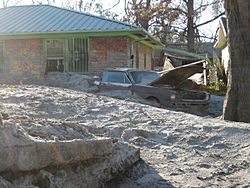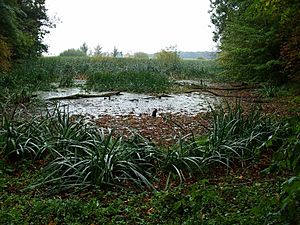Silt facts for kids


Silt is soil or rock that developed from granular material of a specific grain size.
Grain size criteria
Silt particles range between a 1⁄256 and 1⁄16 mm (3.9 to 62.5 μm), larger than clay but smaller than a sand. Silt is chemically distinct from clay, and unlike clay, grains of silt are approximately the same size in all dimensions.
Silt may occur as a soil or alternatively as suspended sediment in a water column of any surface water body. It may also exist as deposition soil at the bottom of a water body and it can occur as a deposit or as material transported by a stream or by a current in the ocean. Silt is easily transported in water and is fine enough to be carried long distances by air as 'dust'. Thick deposits of silty material that result from wind deposition are often called loess (a German term) or limon (French). Silt and clay contribute to turbidity in water.
Images for kids
-
Windrow of windblown glacial silt, Northwest Territories, Canada
See also
 In Spanish: Limo para niños
In Spanish: Limo para niños


